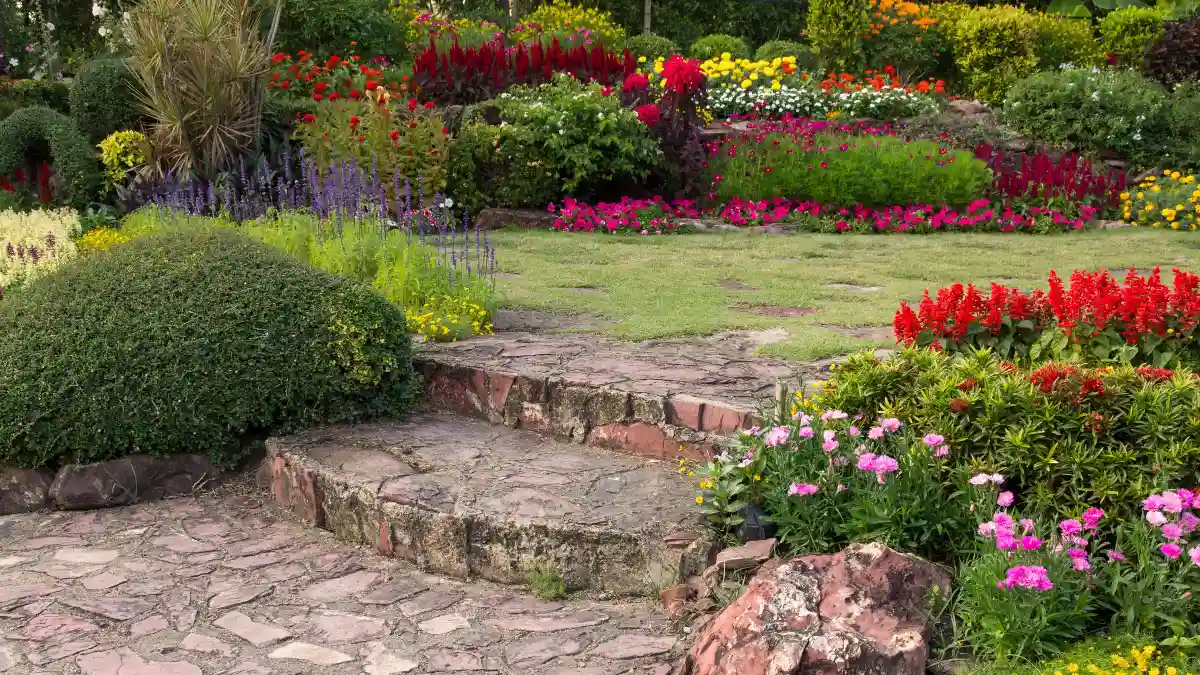Minimalism is out—2025 gardens are going maximal: dense layers, big color, and wildlife-rich plant communities. That’s not just a vibe—it’s the direction of this year’s garden trend reports, from the “hot-mess garden” look to exuberant, layered borders that favor biodiversity and long bloom sequences. (ELLE Decor highlights the rise of maximalist, ecologically minded gardens in Summer 2025; “maximalist borders” are called out as a headline backyard idea for the year.)
If you love the lush look but worry about chaos, pests, or time-sucking upkeep, this guide turns “more-is-more” into a repeatable system. You’ll get 11 plug-and-play maximalist garden designs with exact planting densities (so beds look full fast), right-plant/right-place checks (to cut maintenance), pollinator-smart choices (for real habitat value), and small-space options (containers and verticals that punch above their size). We’ll show you how to plan maximalist borders with complementary or analogous color, how to convert a lawn-to-meadow garden for biodiversity and water savings, and how to stack textures and bloom times for four-season interest.
By the end, you’ll have a simple, evidence-backed playbook for maximalist garden designs—bold, resilient, and genuinely wildlife-friendly—plus mini-checklists you can act on this weekend. (Keywords used naturally: maximalist garden designs, maximalist garden ideas, maximalist borders, lawn-to-meadow garden.)
Color-Drenched Maximalist Borders
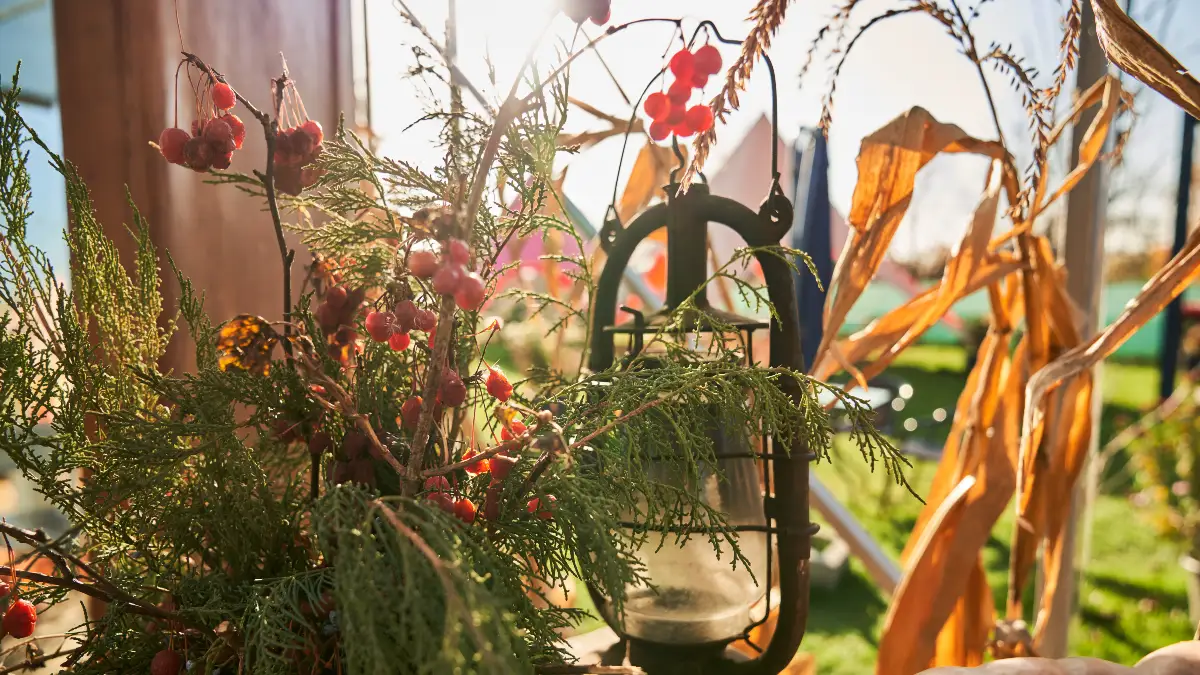
Make Color Read as “Curated,” Not Chaotic
Practical add-ons for color-drenched maximalist borders: palette ratios, density math, bloom timing, and drift repetition—designed for white-background pages.
Palette Builder: 60/30/10 That Works Outdoors
60% dominant hue, 30% supporting hue, 10% accent keeps “more-is-more” readable. Pick complementary or analogous—then repeat the combo in drifts.
Color-scheme cohesion is a recurring recommendation in design guidance from university horticulture programs (e.g., UGA CAES).
Density at a Glance (Plants per m²)
| Spacing (cm) | Approx. plants/m² | Use case |
|---|---|---|
| 30 | ≈ 11.1 | full first year (Pollinator Pathmaker aesthetic) |
| 35 | ≈ 8.2 | matrix border sweet spot (Noel Kingsbury) |
| 40 | ≈ 6.3 | airier feel; relies on plant spread |
| 45 | ≈ 4.9 | risk gaps unless fast spreaders |
Rule-of-thumb math: plants/m² ≈ 1 ÷ (spacing in m)². Choose 7–12/m² for lush, weed-suppressing borders.
Bloom Ladder (Apr → Oct)
Aim for continuous bloom: at least one group peaking each period so the border never “goes quiet.”
Drifts & Repetition (Readability Trick)
Repeat 3–5 anchor species in small drifts for rhythm. Typical drift = 3–7 plants, echoed across the bed.
- Echo form and texture as much as color (grasses against bold leaves).
- Place repeats on a soft diagonal to guide the eye through the border.
Matrix & repetition are core to naturalistic planting advocated by designers like Noel Kingsbury.
Practice Notes from the Pros
Dense, repeated plant communities read as coherent—and they self-support, shading soil to cut weeding and watering.Noel Kingsbury (naturalistic planting designer)
- RHS tip: Plan structure first (grasses/architectural perennials), then thread accent color.
- Weekend move: Pre-stage plants in groups on the soil to check rhythm before you dig.
You get maximal impact when color looks intentional. Use complementary (e.g., purple–yellow) or analogous palettes (e.g., blue–purple–magenta) and repeat 3–5 signature plants in drifts so the eye reads rhythm, not noise. (University of Georgia’s CAES Field Report explains how complementary/analogous schemes create vivid yet cohesive planting.)
For the lush look without gaps, plant densely: ~7–9 perennials per m² for intermingled “matrix” borders (Noel Kingsbury), or ~12 perennials per m² if you prefer a naturalistic, ground-covering aesthetic that suppresses weeds and reads full in year one (Pollinator Pathmaker). Spacing of 30–45 cm typically lands you in that 7–12/m² range.
Layer textures (fine grasses against bold leaves) and stagger bloom from spring to fall so there’s always something firing: think late tulips→salvia/nepeta→echinacea/monarda→asters/anemone. Plan the skeleton (grasses and structural perennials) first, then thread color accents through. The “maximalist border” is explicitly flagged as a defining 2025 look, so leaning into it is both stylish and current.
Quick start palette (sun, 2×3 m bed, ~50–60 plants):
Structure/matrix (repeat): Panicum ‘Northwind’, Sesleria autumnalis (10–12 plants).
Bold foliage: Hylotelephium ‘Autumn Joy’, Baptisia australis (6–8).
Spire/contrast: Salvia nemorosa ‘Caradonna’, Verbena bonariensis (10–12).
Fillers/weavers: Nepeta ‘Walker’s Low’, Achillea ‘Terracotta’ (14–16).
Season extenders: Anemone ‘Honorine Jobert’, Symphyotrichum novae-angliae (8–10).
Adjust list to your zone and soil using RHS border-planning basics.
Micro-checklist: Choose one palette (complementary or analogous) → set 7–12/m² density → repeat 3–5 anchors in drifts → confirm spring–fall bloom ladder.
Wildlife-First Pollinator Maximalism
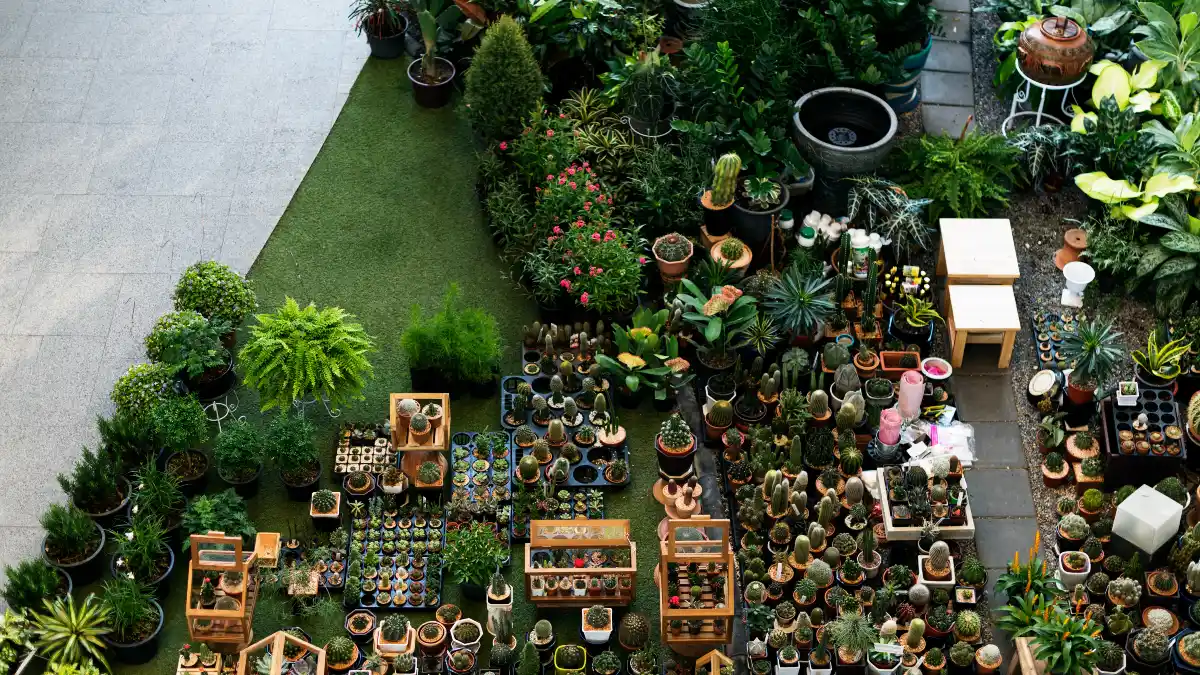
Maximalist planting should boost ecosystems, not just aesthetics. The most consistent finding across recent studies: flower species richness (many different plant species) coupled with abundant blooms drives higher pollinator abundance and diversity—for both generalists and specialists. (See 2024 and 2022 peer-reviewed work synthesizing richness vs. abundance effects on visitation and pollen limitation.)
Build abundance the simple way: select regionally native species for your site conditions, then add long-flowering, non-invasive ornamentals as color extenders. Aim for continuous nectar/pollen from May–October: early (salvia, nepeta), mid (echinacea, bee balm), late (asters, goldenrods). Provide nesting (a few bare patches for ground-nesters, hollow stems left 20–30 cm high over winter) and shallow water with stones for landing. The USDA underscores that pollinator habitat in gardens increases biodiversity, pollination services, and even biological control—meaning fewer pest issues in the long run.
Two high-performing “edible-meets-ornamental” workhorses for maximalist borders: oregano/marjoram (Origanum spp.) and salvias. RHS’s 2025 Plants for Pollinators update and herb trials list Origanum prominently; it flowers for weeks, knits layers together, and feeds a wide guild of insects.
Micro-checklist: Plant 15–25+ species per 10 m²; mass each in drifts so pollinators can forage efficiently; lock in May–Oct bloom; leave stems until spring; add water dish. (Keywords: pollinator garden, native plants, wildlife garden.)
Lawn-to-Meadow Front Yard

Trade thirsty turf for a native meadow framed by sinuous paths and a tight color story. The payoff is real: NGOs and agencies document better storm-water absorption, higher biodiversity, and less mowing/fertilizer compared with traditional lawn.
One-year conversion playbook (temperate zones):
Prep (weeks 0–6): Smother or terminate lawn (solarize, occult, or non-persistent herbicide per local regs). Rake smooth. Edge the bed so it looks intentional from day one.
Seed + plug mix (week 6): Choose a regional dry-sun or mesic-part-shade mix; add keystone plugs (e.g., Schizachyrium, Echinacea, Solidago) for fast structure. Sow in two passes (cross-hatch) with carrier.
Establishment (year 1): Mow at 10–15 cm whenever annual weeds reach 20–25 cm. Water to establish, then wean. Full cut once in late fall or early spring of year 2. (Reduced and patterned mowing regimes raise insect biomass and diversity in urban grasslands.)
Public perception is shifting: national and city programs now actively support lawn reduction; regional trusts report converting dozens of acres of “biologically barren lawn” into meadow. In parallel, recent UK research shows up to 93% more butterflies when some lawn is allowed to grow long—powerful motivation to keep patches wild.
Design tip: Carve 80–100 cm walking loops and 2–3 small “clearings” so the meadow reads curated, not neglected. (Keywords: lawn-to-meadow garden; lawn replacement; wildlife meadow.)
Container Jungle
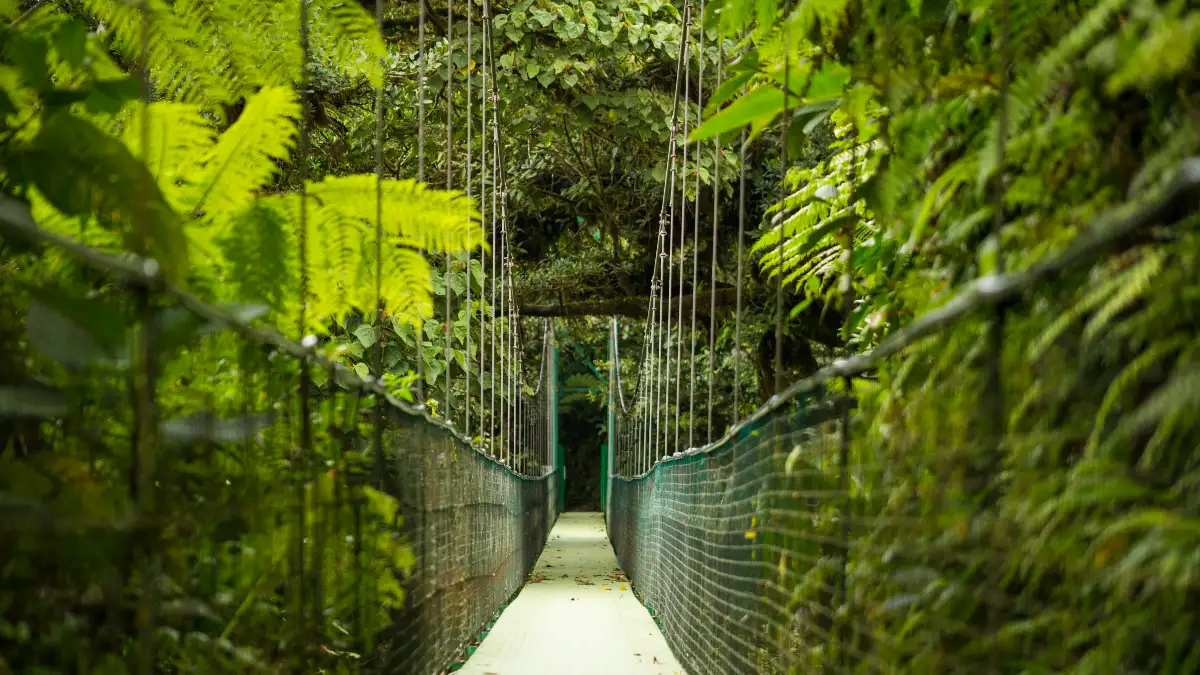
You can turn a balcony or patio into a wall of color with the classic Thriller–Filler–Spiller recipe: one upright focal plant, a mounding middle, and a trailing edge. Proven Winners popularized this formula because it’s repeatable and hard to mess up—and it still delivers high-impact container maximalism in 2025. Gardenstead’s 2025 seasonal guide shows the approach scales from a single pot to clustered displays for a patio garden refresh each season.
Design like a stylist: cluster pots at multiple heights (stool, crate, low bowl) so foliage overlaps and spillers drape from above and below; group by sun and watering needs. Rotate annuals seasonally while anchoring the display with a few woody or evergreen perennials. Fine Gardening’s grouping tips—mix pot heights and forms so the whole vignette reads as one composition—make the difference between “several pots” and a container jungle.
Potting that prevents problems: keep the soil line 1–2 inches below the rim for deep, mess-free watering; do not bury the plant crown (UC Agriculture & Natural Resources). Containers dry fast—daily watering in summer sun is common—and nutrients leach out, so use slow-release fertilizer in the mix plus light, frequent feedings (¼-strength with each watering) once plants are established.
Two plug-and-play T-F-S combos
Sun: Thriller Canna; Fillers calibrachoa + geranium; Spiller sweet potato vine.
Shade: Thriller Colocasia; Fillers New Guinea impatiens + ferns; Spiller creeping jenny.
Micro-checklist: match light + water, vary heights, keep crowns high, feed lightly/often. (Keywords: container maximalism; thriller filler spiller; patio garden.)
Vertical Maximalism
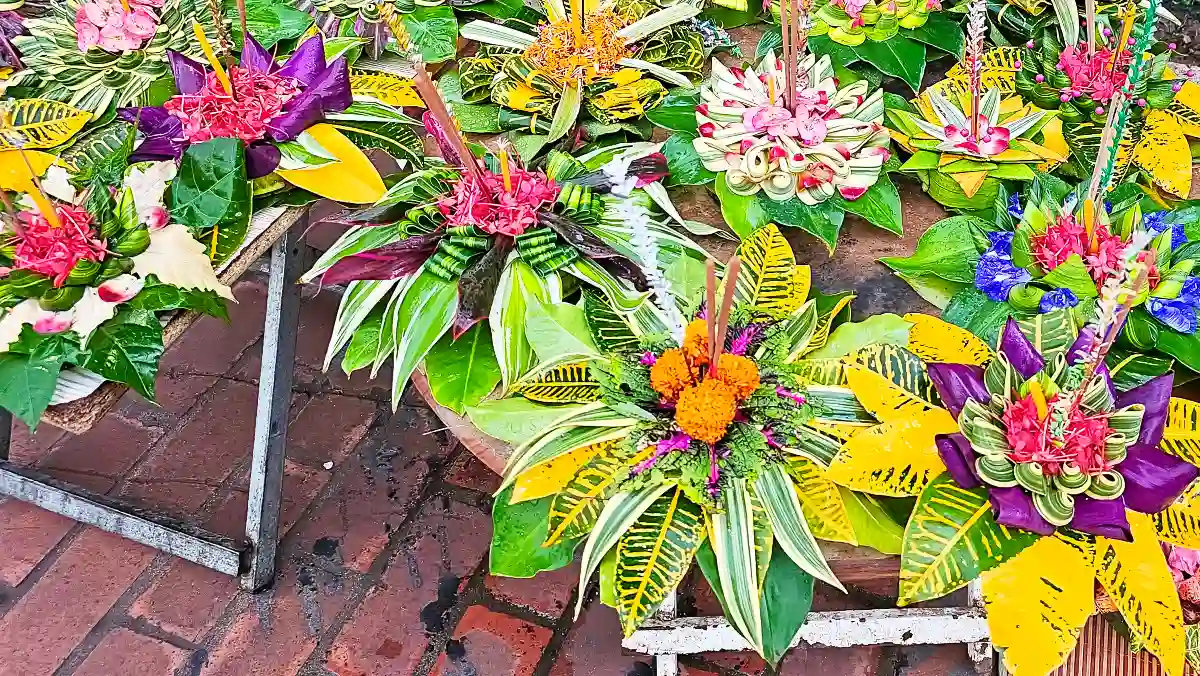
Trellises, arches, and obelisks multiply space and airflow while stacking blooms at eye level. Train climbers early, tie loosely, and support fruit where needed—small melons are ideal for vertical culture; use fabric slings once fruits size up so weight doesn’t snap vines (University of Minnesota Extension). The same page notes that trellising lets even compact gardens grow melons and cucumbers successfully.
Why go up? Utah State University Extension sums it up: vertical systems maximize production, raise foliage for better air circulation, make pests easier to spot, and simplify harvest—perfect for tight urban beds. For ornamental vines, mix bloom shapes (trumpets, clusters, stars) and leaf textures; echo colors already used in your beds so verticals feel integrated, not stuck on.
Heat where you garden? Add living architecture. Green walls and green roofs act like evaporative radiators: the U.S. EPA documents dramatic roof-surface cooling and meaningful nearby air-temperature reductions, with building energy savings as a bonus. Recent research reviews report ~2–5 °C outdoor cooling from continuous green walls under summer conditions, with higher reductions in intensive systems. In hot exposures, combine shade-tolerant species with irrigation and a breathable growth medium; in temperate sites, drought-tough perennials on modular panels often suffice.
Starter strategy:
South/west wall: espalier apple/pear on wires + underplant with salvias.
Narrow side yard: arch + two trellises; run clematis with annual cup-and-saucer vine for a first-year show.
Micro-checklist: pick the right climber, sling heavy fruit, prune to one or two leaders, irrigate at roots, and secure the structure.
Edimental Potager (edibles + ornamentals)
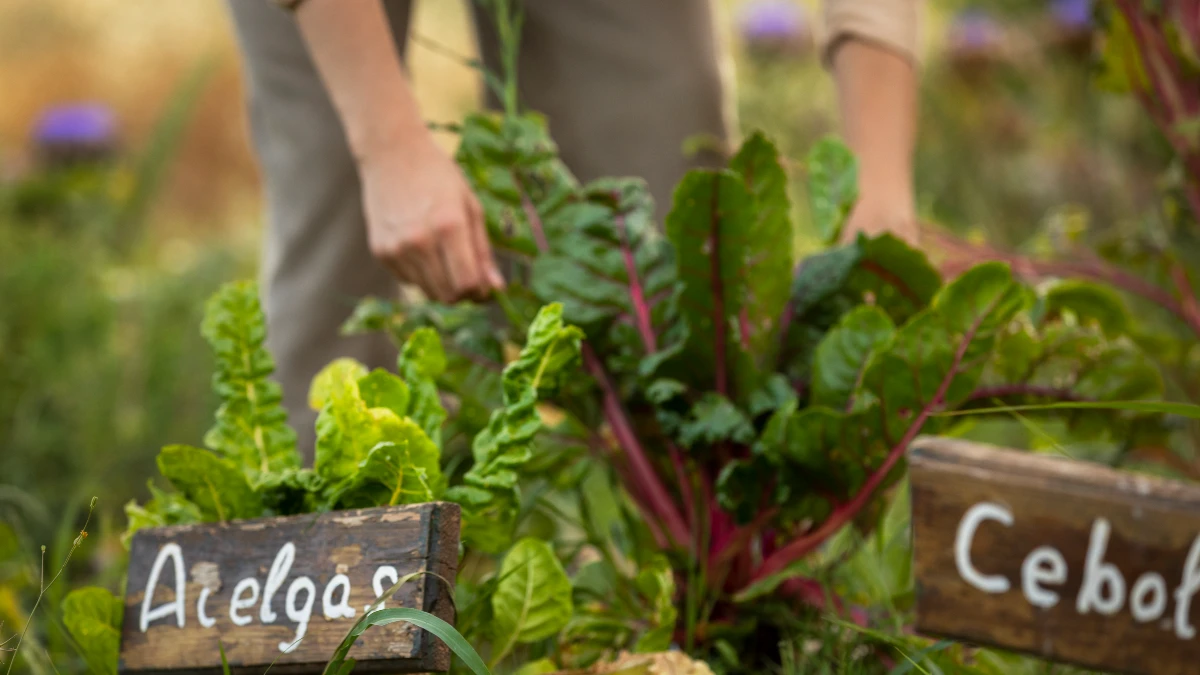
Blend food and flowers for a border that feeds you and the pollinators. AP News spotlights the rise of foodscaping—slipping vegetables and fruit into ornamental beds for beauty and function. Think glossy chard against purple heuchera, kale with salvias, or a low blueberry hedge edging a path. Group by sun and water needs so maintenance stays simple.
Make the planting work harder with companions. Better Homes & Gardens highlights zinnias and marigolds near vegetables to draw bees and beneficials; herbs like basil, dill, cilantro, oregano, and marjoram are nectar stations that also season dinner. Extension guidance (Penn State; UF/IFAS) backs herbs as powerful beneficial-insect resources—supporting lady beetles, hoverflies, parasitic wasps, and more.
Ecologically, diversity is your engine: peer-reviewed studies show flower species richness strongly predicts pollinator abundance and natural enemies in managed landscapes. In practice, that means lots of species—but in repeated drifts so it still reads curated. Sow annuals in waves (cosmos, calendula) between perennials to fill gaps while shrubs size up.
Three ready recipes (4×2 m bed):
Tomato alley: tomatoes on twine; underplant with basil, marigolds, and oregano; edge with dwarf zinnias.
Pepper ribbon: peppers + dill and calendula; interplant with bush beans.
Berry frame: blueberries (acid bed) with heuchera and thyme; spring bulbs between crowns.
Micro-checklist: same sun/water groupings, bloom from May–Oct, at least 15+ species/bed, and leave some stems over winter.
Texture-First Maximalism
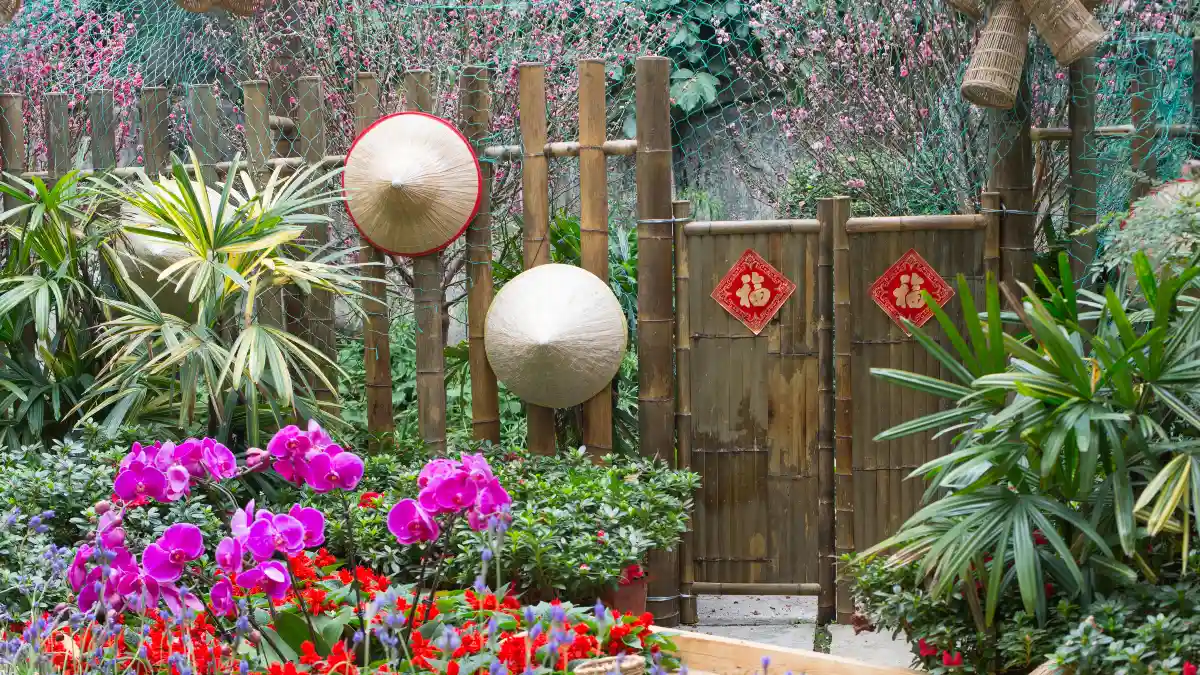
Color fades; texture carries the show. Build layers that look good even when blooms pause: fine grasses against bold leaves, glossy next to matte, vertical spears beside rounded mounds. In her 2025 “A Way to Garden” interview, Teresa Woodard (author of Garden to the Max) stresses that maximalism is curation, not clutter—you get drama by intentional repetition of forms and plants, not by adding random variety.
Start with a dominant texture (bold or fine) and echo it three times across the bed. Use a matrix of evergreen structure (clumping grasses, small conifers, or broadleaf evergreens), then thread seasonal color through. For cohesion, repeat leaf shape or edge as much as color. Margaret Roach’s archives also note that repeating one genus, shape, or hue “strings the garden together” so the eye can rest.
Practical palette (sun, 3×2 m):
Bold anchors: Hylotelephium clumps, Baptisia, and a dwarf shrub (Physocarpus).
Fine weave: Sesleria or Sporobolus in a loose grid.
Contrast leaves: a silver Artemisia and one big-leaf perennial (e.g., Bergenia).
Accents: 3 repeats of Salvia ‘Caradonna’ or Nepeta for seasonal rhythm.
Pro tip: shoot a black-and-white photo of the bed—if form and texture still sing without color, your design will hold through every season.
Night & Fragrance Garden
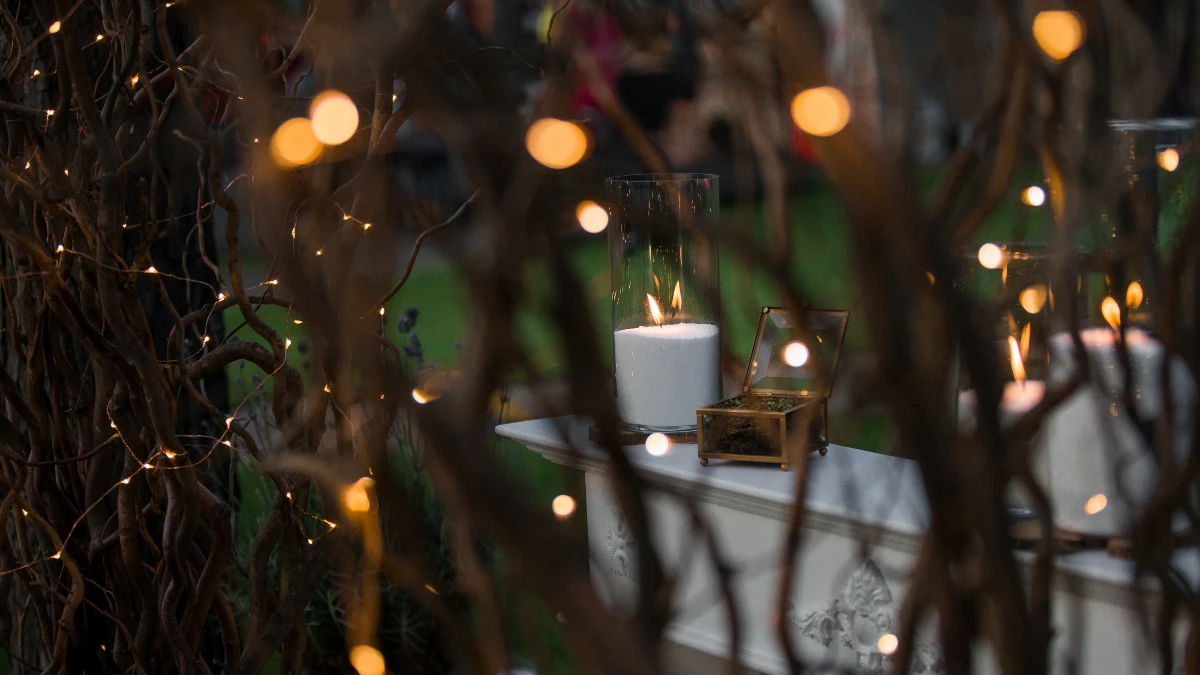
Design for your nose first, then your eyes. Put white or pale blooms and strongly scented plants (think daphne, night phlox, nicotiana, star jasmine) right by seating and paths so you actually experience them at dusk. The Royal Horticultural Society and UK nurseries both emphasize siting scented choices near patios and doors to concentrate fragrance where you linger.
Keep lighting wildlife-friendly. DarkSky International’s five principles—useful, targeted, low-level, controlled, warm-colored—cut glare and reduce insect disruption. Pick fully shielded fixtures, set timers or motion sensors, and choose warm-white LEDs (≈2700–3000K) to minimize blue-rich light that affects nocturnal insects and pollinators. If you shop, look for DarkSky Approved labels to simplify compliance.
Layer light sparingly: low bollards or downlights to mark paths, a single dimmable sconce for seating, and moon-reflecting foliage (silver artemisia, lamb’s ear, variegated hosta) to “glow” without extra lumens. The goal is guidance, not floodlight—aligned with dark-sky guidance to limit skyglow and wildlife disturbance.
Micro-checklist: plant pale, scented choices by the patio; set 2700–3000K warm-white lamps; fully shield and dim; add sensors/timers; highlight foliage, not the sky.
Salvage-Chic Hardscape

Maximalism isn’t just plants—paths and pads can carry color and texture. Mix reclaimed brick, mismatched pavers, and mosaic stepping pads set into gravel. Repeat one shape or color (for example, circular medallions or a terracotta tone) so the “more-is-more” reads intentional, not chaotic.
Go permeable wherever you can. The U.S. EPA notes that pervious concrete, porous asphalt, interlocking pavers, and grid systems let rain infiltrate, which reduces runoff and filters pollutants—key to keeping beds moist longer between storms and easing irrigation demand on adjacent plantings. Set a compacted angular-gravel base, a thin bedding layer, and sweep jointing grit; keep 1–2% slope away from structures.
Fold lighting into the hardscape without harming night life: follow DarkSky International principles—low level, warm color, and full shielding—on path lights and step markers to avoid glare off paving and to protect insects and other wildlife.
Quick build (1.2 m path): double soldier course of reclaimed brick edges → 60×60 cm mixed pavers set on compacted 20–25 cm gravel → 2–3 mm open joints filled with grit → two shielded bollards at knee height on a timer.
Water & Mirror Moments

A tiny wildlife pond is the fastest way to add movement, reflection, and biodiversity. The RHS confirms even mini-ponds in tubs help; for in-ground builds, vary depth with shelves and aim broadly for 20–60 cm (8–24 in) in small wildlife ponds, avoiding sheer sides. Add a shallow pebble beach so bees, birds, and hedgehogs can enter and exit safely. Plant marginals (carex, iris, water mint) and let a third of the surface stay open.
Keep water moving gently with a small bubbler to limit mosquitoes (no high jets needed), and place a second shallow bowl with pebbles near seating for easy wildlife watching. For a visual “amplifier,” use dark-glazed pots or a black-lined basin—darker water behaves like a mirror, doubling nearby planting.
Micro-build (barrel pond): watertight half-barrel → bricks to create a shelf → 2–3 marginal plants in aquatic baskets → rinse pea gravel and top baskets → fill; add a solar bubbler and a pebble landing on one side. Top off weekly in heat.
Succession Cut-Flower Maximalism
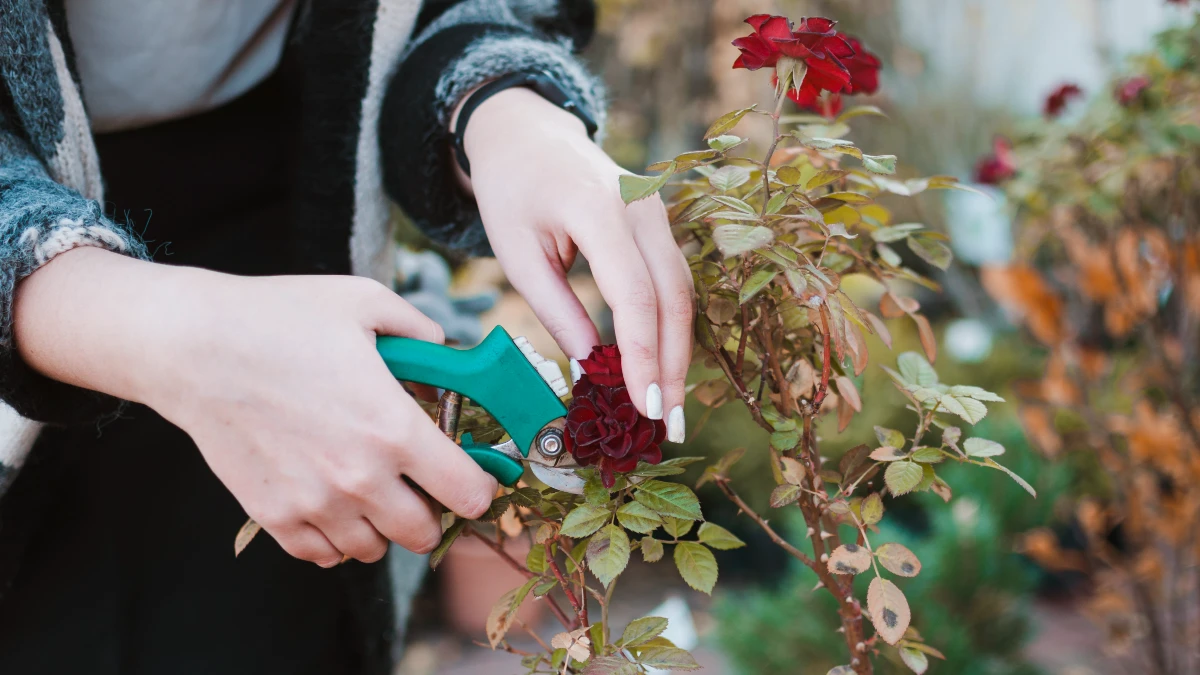
Grow a show bed that never stops. Succession sow zinnias and cosmos every 2–3 weeks through early summer; tuck in sunflowers for height and dahlias for a late-season surge. Interplant with herbs—basil, dill, parsley—so you’re feeding beneficial insects as you feed your vases; leave some seedheads (rudbeckia, cosmos) for finches. Better Homes & Gardens highlights zinnias as companion magnets that draw pollinators and beneficials to peppers, cucurbits, and tomatoes—boosting fruit set while you harvest bouquet stems.
Pack plants closer in a display bed than in a market row, then stake or net early to prevent tangles. Deadhead hard weekly to extend bloom, and refresh with a final sowing of quick annuals (cosmos, calendula) for fall color.
Two quick palettes (3×1 m):
Hot brights: zinnia ‘Benary’s Giant’ (succession), cosmos ‘Rubenza’, sunflower ‘Vincent’, dahlia ‘Cornel’.
Soft pastels: zinnia ‘Zinderella Peach’, cosmos ‘Cupcakes White’, sunflower ‘Vanilla Ice’, dahlia ‘Cafe au Lait’.
Cutting cue: harvest in the cool morning, strip lower leaves, and plunge into deep water with preservative.
Right Plant, Right Place
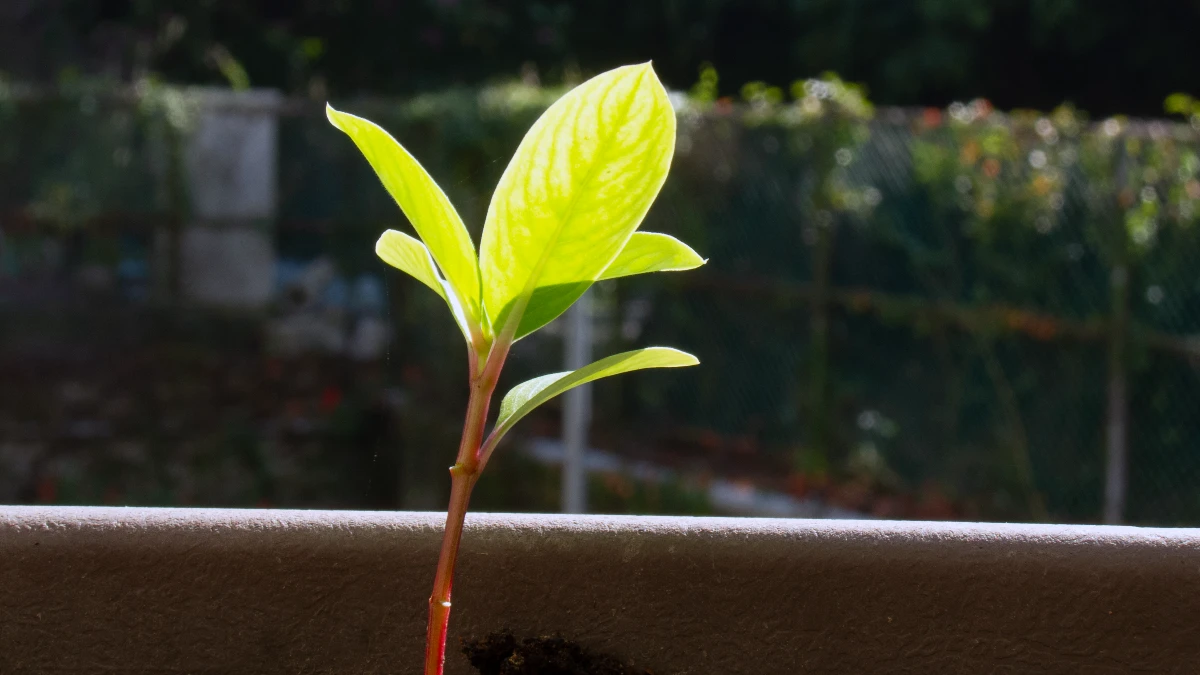
Start with a soil test. Purdue Extension recommends testing every 3–5 years in established beds (more often in intensive veg), and university labs specify sampling depth ~6 inches with multiple subsamples mixed for accuracy. Take samples a few months before planting to allow time for pH and nutrient corrections. UGA CAES adds: once fertility is in the medium–high range, lawns/ornamentals can be sampled every 2–3 years; vegetables 1–2 years.
Then match plant to site: sun hours, soil texture/drainage, and exposure (wind/heat). Planting depth matters—keep the crown at or slightly above finished grade to avoid crown rot and settling problems (UC Agriculture & Natural Resources). For hedges or rows, UK trade guides advise trenches roughly twice the root width so roots can spread without kinking.
Manage pests the smart way with Integrated Pest Management (IPM): prevent (diverse plantings, healthy soil, proper spacing), monitor (scout and set action thresholds), and use least-toxic controls last. The U.S. EPA positions IPM as the most environmentally sensitive approach for home landscapes.
Micro-checklist: sample 6 in deep, test every 3–5 yrs; keep crowns high; group by sun/water; monitor weekly; escalate controls only if thresholds are met. (Keywords: soil test; right plant right place; garden IPM.)
Conclusion
Maximalism works when it’s curated, dense, and ecological. Layer plants at 7–12 perennials per m² so beds read full, repeat colors and forms for cohesion, and prioritize natives plus bloom succession for real habitat. Add verticals and containers to multiply space, shift to permeable hardscape and small ponds for resilience, and use wildlife-friendly lighting to protect the night.
This approach aligns with EPA guidance on stormwater and heat-island reduction, USDA habitat benefits for pollinators, and 2025 design trends celebrating lush, layered planting (as covered by ELLE Decor and others).

